THE COMMONS
For alumni and friends of the Nelson Institute for Environmental Studies at the University of Wisconsin–Madison
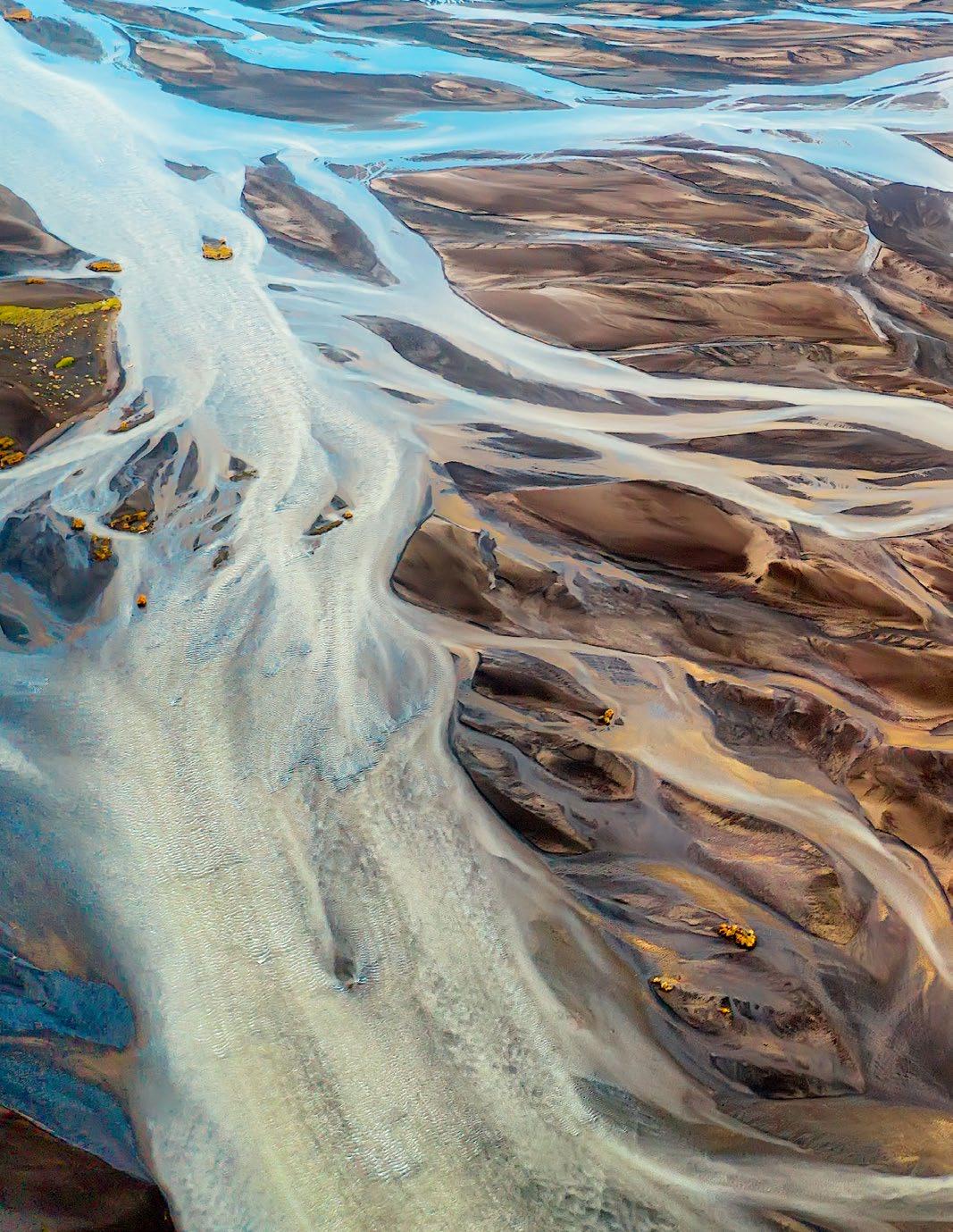
April 2023
Tien Vo is
in soil science.
22
CHE
Page 12
inside a career in remote sensing with David Kolodziejski. Page 24
CESP’s
rooted
Page
Meet art professor and
associate Tomiko Jones.
Go
Earth Day 2023: Species on the Move Get a sneak peek at this year’s event, starting Tuesday, April 18.
EDITORIAL STAFF
Kevin Berger, Graphic Designer
Eric Klister, Web Editor
Chelsea Rademacher, Editor
Diane Stojanovich, Managing Editor
STAFF WRITERS
Rachel Carrier
Anica Graney
Chelsea Rademacher
CONTRIBUTORS
Abigail Becker
Dea Larsen Converse
Will Cushman
Kaitlin Moore
DEAN’S OFFICE
Paul Robbins, Dean, Nelson Institute for Environmental Studies
Anna Gade, Associate Dean for Research and Education
Colleen Godfriaux, Associate Dean for Administration
Diane Stojanovich, Distinguished Associate Dean for Communications
Shelly Strom, Assistant to Paul Robbins
Ann Swenson, Associate Dean for Advancement
CONTACT US
We’d love to hear from you! Send us feedback or questions about this issue, or share story ideas for future issues.
Nelson Institute for Environmental Studies
550 Science Hall Madison, WI 53706 communications@nelson.wisc.edu
Facebook Instagram Twitter Linkedin
Stay connected by updating your contact information or by joining our LinkedIn group
We’re reducing our carbon footprint! We hope you enjoy our digitally published magazine, sent monthly to Nelson alumni, students, and friends.
INSIDE
FEATURES
2 Cave Secrets
A stalagmite from Cave of the Mounds reveals a rich history of climate change.
4 Earth Day 2023: Species on the Move
Take a look inside this year’s event, starting Tuesday, April 18.
8 Wisconsin’s Climate: Warmer, Wetter, and More Extreme Events
The WICCI Climate Working Group addresses challenges and shares recommendations.
10 Electrifying Outagamie County
EAP certificate students build report for updating electric vehicle infrastructure.
FACULTY/STAFF IMPACT
12 Tomiko Jones, Center for Culture, History, and Environment
14 Ellen Damschen and John Orrock, Center for Ecology and the Environment
16 Tim Lindstrom, Office of Sustainability
FRONT AND CENTER
17 Director’s Cut: Michael Notaro
18 Reid Bryson Scholarship Competition: Sean Bertalot
STUDENT SNAPSHOT
20 Michelle Yang, Sustainability Certificate
22 Tien Vo, Community and Environmental Scholars Program
ALUMNI SPOTLIGHT
24 David Kolodziejski, Environmental Observation and Informatics
FROM THE DEAN
Dear Nelson Community,
Environmental change is increasingly inevitable, and its enormity is beginning to become clear. Given the changes we see in the world around us (climatic, hydrological, and phenological), plants and animals face an emerging, dynamic world. But they aren’t sitting still! Wildlife, habitats, flora, and fauna are all on the move, and with them comes upheavals in how we teach, manage, and conserve the world we care about.
These are the themes of our Earth Day events this year, and they are right around the corner! There’s still time to register for our two-day event, Earth Day 2023: Species on the Move. The first day — Tuesday, April 18 — will offer in-person opportunities to learn and connect. I’m excited to hear from our three plenary speakers, whom you can read more about on the program website. For those of you who live further afield, I hope you can join us on Wednesday, April 19, for our virtual day, which features breakout sessions hosted by each of our research centers, plus some of our friends across campus, and will close with what will surely be an extraordinary talk about Indigenizing conservation.
Campus is also celebrating Asian Pacific Islander Desi American (APIDA) Heritage Month this month with a wonderful collection of events around the theme, Voices Intertwined: Stories That Shape Us. I encourage you to browse the APIDA Heritage Month website to see the full lineup of events.
This issue, as always, shows the great breadth and depth of the Nelson Institute’s work. We have a new understanding of our local climate history, thanks to a new study that analyzed a stalagmite from Wisconsin’s Cave of the Mounds. Congratulations to Cameron Batchelor, Feng He, Shawn Marcott, and Ian Orland of the Center for Climatic Research on this impressive finding! From caves to forests, affiliate professors Ellen Damschen and John Orrock have finished an experiment that shows how big of an impact a single seeding of native understory plants can make on a degrading landscape. You will also learn about faculty affiliate Tomiko Jones, whose photography shows us our world’s changing landscapes.
Our students and alumni are also hard at work, carving their own paths for the future with the skills the
Nelson Institute helped them grow. Tien Vo, a Community and Environmental Scholar, is digging her hands into the world of soil science; sophomore Michelle Yang is pairing her passion for marketing and finance with a sustainability certificate; and alumnus
David Kolodziejski is using his environmental observation and informatics degree to support forest health in the U.S.
Our featured center this month is the Center for Climatic Research (CCR) which, as you can read on page 17, has no shortage of impressive updates. From collaborating with the Center for Sustainability and the Global Environment to hosting pre-college students on campus to running a STEM summer camp, I think CCR does it all!
I’d like to extend a special thank you to everyone who participated in this year’s Day of the Badger festivities. Together, we raised more than $19,000 for the Nelson Institute! We also saw some wonderful participation on our social media channels with our special Nelson spin: Night of the Badger. In case you missed it, we paid homage to the Badger comic (a personal favorite!) which features a crime-fighting antihero and is set right here on the UW campus.
What do you want to read about in future issues of The Commons? I appreciate your suggestions; please either reach out to me or our editorial team with ideas or improvements.
Take care,
 Paul Robbins Dean, Nelson Institute
Paul Robbins Dean, Nelson Institute
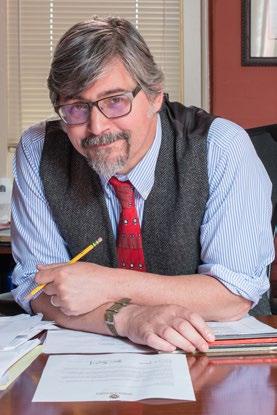
April 2023 1
Cave Secrets
Wisconsin’s Cave of the Mounds holds many secrets, but some big ones are coming to light thanks to UW researchers including Cameron Batchelor, Feng He, Shawn Marcott, and Ian Orland of the Nelson Institute’s Center for Climatic Research. In studying a stalagmite from the cave, the team found evidence of “a series of massive and abrupt warming events that punctuated the most recent ice age.” Learn more about the findings.
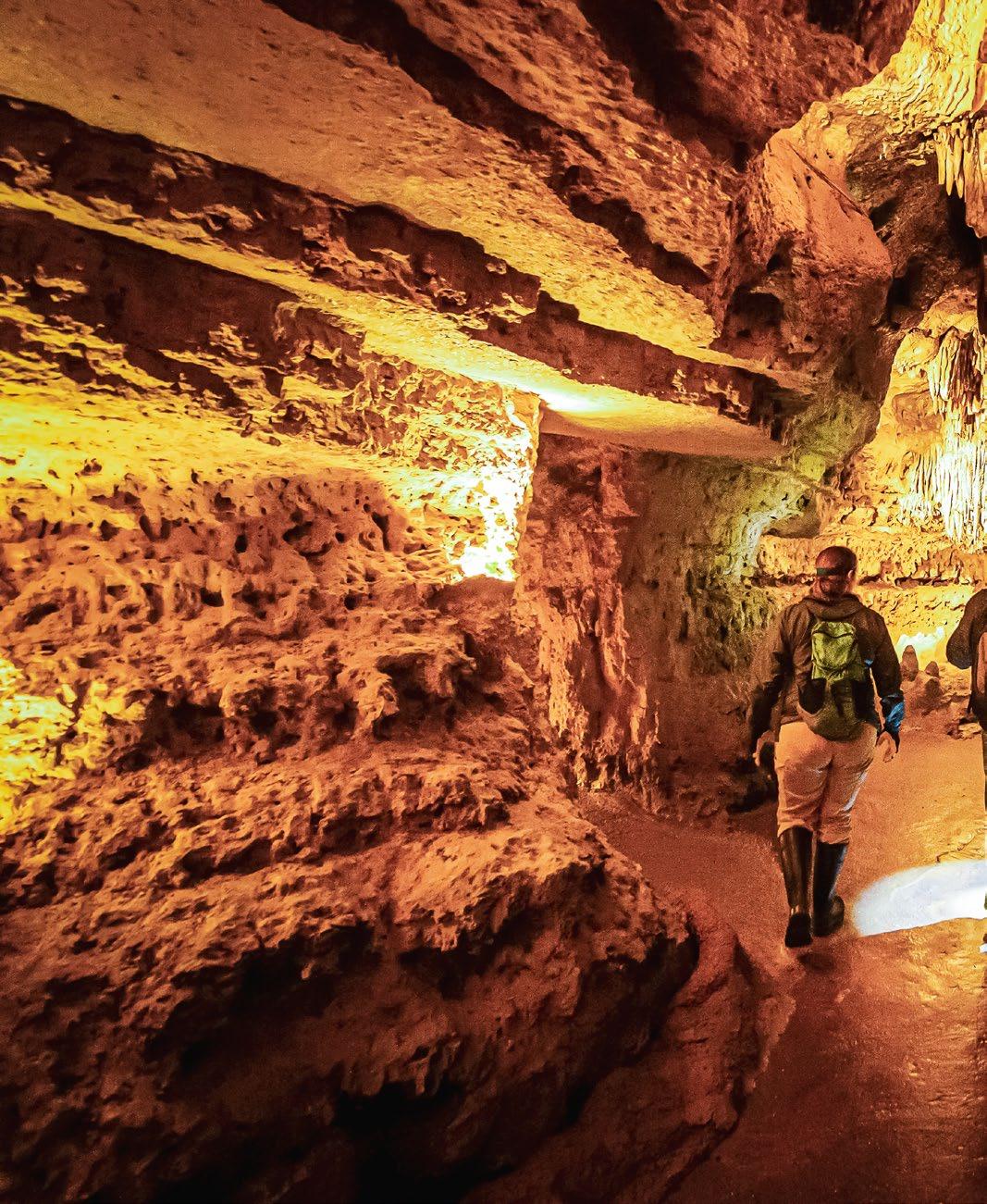
Feature

August 2021
Photo by Bryce Richter / UW–Madison
Earth Day 2023 to explore the physical shifts of people, animals, and plants.
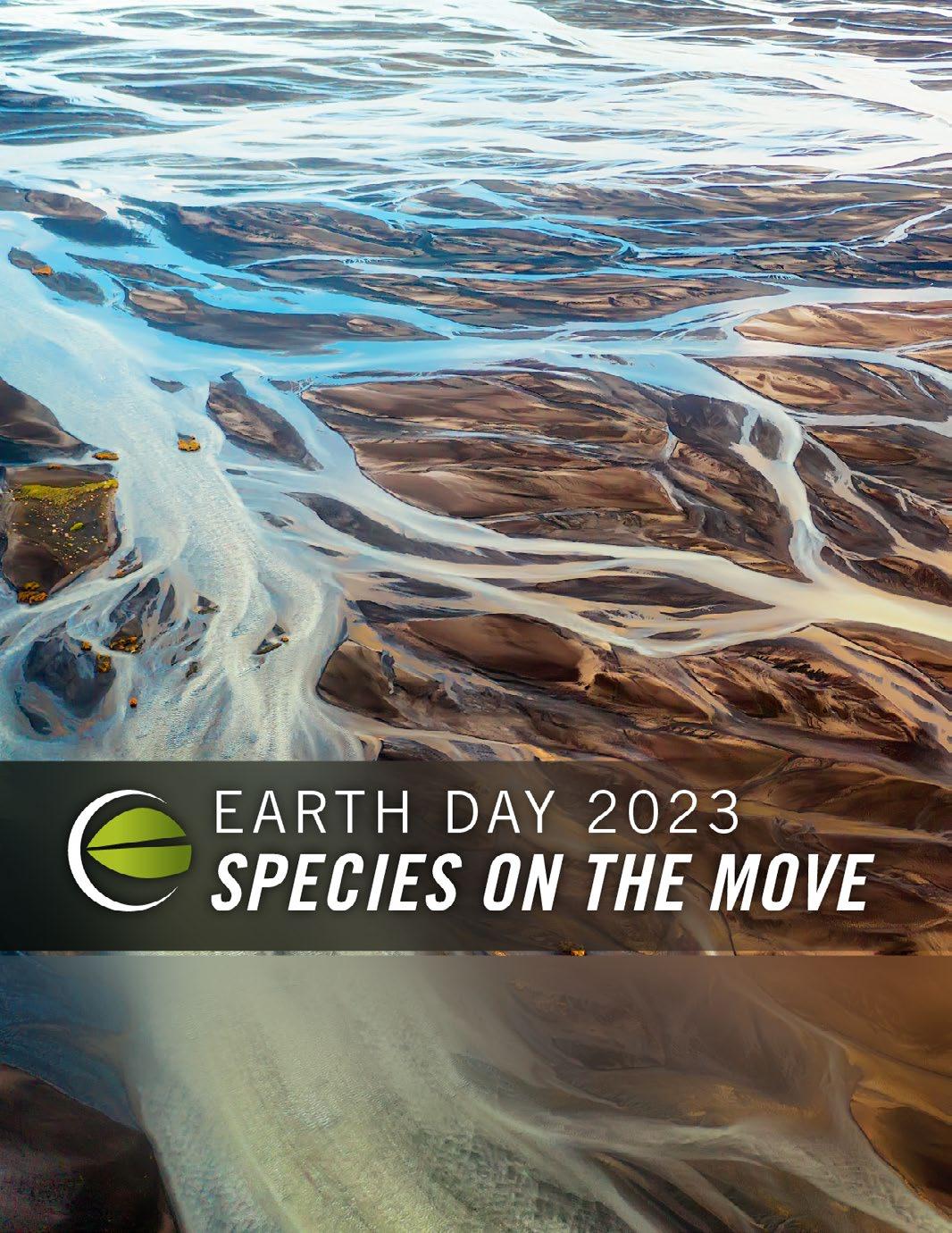
Feature
Across the globe, climate change has put people, animals, and plants in a constant state of movement. What do these shifts mean for our world? How are we taking action?

Join UW–Madison’s Nelson Institute for Environmental Studies for Earth Day 2023: Species on the Move , a two-day community learning event with both in-person and virtual opportunities to learn and connect. The event will kick off on Tuesday, April 18, with an afternoon of in-person learning and networking at the Discovery Building. Browse partner exhibit tables and enjoy three lectures presented by national experts. Then on Wednesday, April 19, join for a morning of virtual breakouts and plenary sessions.
“When we think about the enormity of global environmental change, we usually start by thinking about people: How will we adapt? How will we look after the most vulnerable populations? How will we change in the face of complex transformations all around us?” says Paul Robbins, dean of the Nelson Institute. “But animals and plants are addressing the exact same questions right now! Creatures across the planet are changing, moving, and interacting in whole new ways. The better we understand these changes, the better a place we can make it for both for ourselves and for the vast biodiversity all around us. Humans and non-humans are definitely on the move. That’s our focus this Earth Day.”
Explore the variety of talks and breakout sessions here, then be sure to register! There are limited seats available for the in-person events. Questions? Contact events@nelson.wisc.edu
“Creatures across the planet are changing, moving, and interacting in whole new ways. The better we understand these changes, the better a place we can make it for both ourselves and for the vast biodiversity all around us.”
Event Accessibility
The in-person Earth Day events will take place at the DeLuca Forum in the Discovery Building. The DeLuca Forum is located on the first floor of the Discovery Building and can be accessed in a wheelchair. Doors to the building have automatic-open buttons. Bathrooms are wheelchair accessible, and there is one gender-neutral bathroom on the first floor. The virtual events will have a closed-captioning option. If you need any accommodations, please contact us at events@nelson.wisc.edu
Keynote Speakers



April 2023 5 Feature
— Paul Robbins
Patrick Gonzalez Erica Bower
Ryan Phelan Andrea Akall’eq Burgess
Earth Day 2023 Schedule at
a Glance
Tuesday, April 18 — In Person
Discovery Building, 330 N. Orchard Street
Madison, WI 53715
1:30–6 p.m. *all times in central time*
Registration is required to attend the in-person event, as seats are limited.
1:30 p.m.
2:30–2:45 p.m. 2:45–3:30
Exhibits and check-in open. Explore the Discovery Building and meet our community partners.
Welcome remarks by Dean Paul Robbins
“Hope for the Future: Anthropogenic Climate Change, Global Biodiversity Shifts, and Solutions” by Patrick Gonzalez, executive director of the UC–Berkeley Institute for Parks, People, and Biodiversity
“New Frontiers in Genetic Rescue for Wildlife Conservation” by Ryan Phelan, cofounder and executive director of Revive & Restore, the leading wildlife conservation organization promoting the incorporation of biotechnologies into standard conservation practice
“Addressing Human Mobility in a Warming World: Challenges and Opportunities” by Erica Bower, a climate displacement researcher with Human Rights Watch, a research and advocacy nonprofit

Closing remarks by Dean Paul Robbins
Exhibit hall closes; see you tomorrow!
Support Earth Day
You can help support Earth Day — this year, and beyond! Your gifts to the Earth Day Program Fund help us bring top-notch speakers to campus and create opportunities for learning and connection. Gifts in any amount are greatly appreciated; make your gift today!
Feature
p.m.
p.m.
p.m.
p.m.
p.m.
3:40–4:25
4:35–5:20
5:20–5:30
6
Wednesday, April 19 — Virtual
Zoom
To attend any of the breakout sessions, you must first register through the main registration form. You will then be sent a link to register for the breakouts in advance, or you can simply join them on the day of the event.
Concurrent Breakout Sessions
9–9:50 a.m.
Earth’s Biosphere in Flux: Terrestrial Ecosystems Transformed by Climate Change
Hosted by the Center for Climatic Research
Learning to Make Running Water Walk: Partnering for Resilience in the Coon Creek Watershed in the Driftless Area of Wisconsin
Hosted by the Center for Culture, History, and Environment
Becoming W.I.S.E.: UW–Madison’s Global Health Institute Prepares for the Next Pandemic
Hosted by the Global Health Institute
10–10:50 a.m.
Detecting Species on the Move
Hosted by the Center for Sustainability and the Global Environment
Framing the Message to Engage with Volunteer Monitoring and Management of Aquatic Invasive Species
Hosted by the UW Division of Extension Natural Resources Institute
Renewable Energy, Agriculture, and Home: Wisconsin’s Changing Landscapes
Hosted by the Wisconsin Energy Institute, the Office of Sustainability, and the Energy, Analysis, and Policy Program
How Do Species on the Move Impact the Ecology of Their New Home?
Hosted by the Center for Ecology and the Environment
11–11:50 a.m. Closing
12:15–1:15 p.m.
Species on the Move for Creative Writers: A Reading and Collective Journaling Session in Response to the Essay “Living Words” by Brigitte Baptiste
Hosted by the 4W Initiative
Seeking Sanctuary: What Human and Wildlife Migration Have in Common
Hosted by the Loka Initiative
Re-Setting Our Relationship with Nature by Indigenizing Conservation by Andrea Akall’eq Burgess, global director of conservation in partnership with Indigenous peoples and local communities at The Nature Conservancy
April 2023 7 Feature
Plenary Session
Wisconsin’s Climate: Warmer, Wetter and More Extreme Events
The WICCI Climate Working Group addresses challenges and shares recommendations.
By Dea Larsen Converse
The recently published report from the Wisconsin Initiative on Climate Change Impacts (WICCI) shows that the last two decades have been the warmest on record, and the past decade has been the wettest. Wisconsin is already feeling the impacts produced by this changing climate, which will become more drastic as the climate continues to warm.
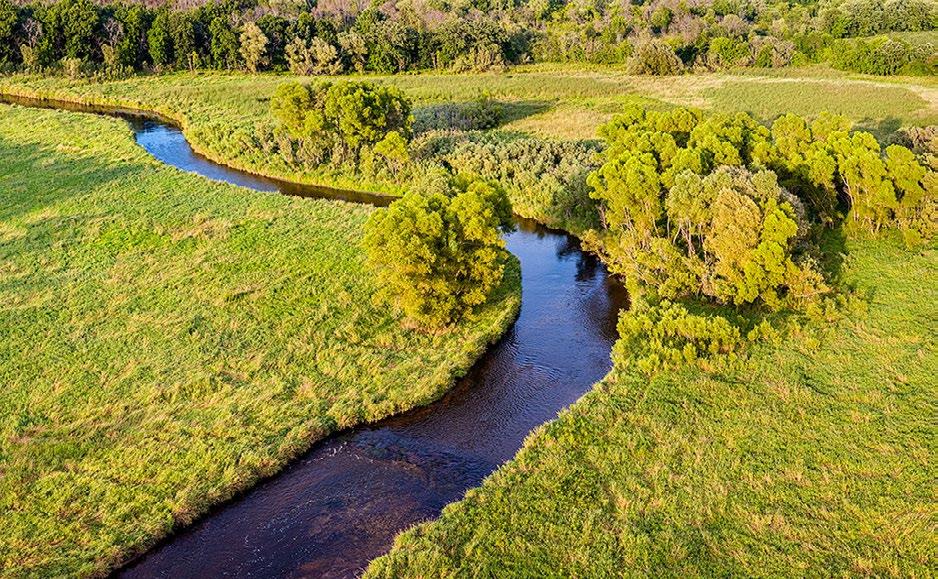
Wisconsin’s climate continues to change in ways that are consistent with the projections from the 2011 WICCI Assessment Report. The decade from 2010–19 was the wettest in Wisconsin since records began in the 1890s, with the statewide annual average precipitation increasing 17 percent since 1950. Wisconsin is also getting warmer, with av -
erage temperatures increasing by 3 degrees Fahrenheit since the 1950s. Not only are we getting more precipitation, we are also experiencing more highly extreme storm events. For example, heavy daily precipitation events across Wisconsin show a rising trend in recent decades. While rare, these events are exceedingly damaging.
All seasons and regions of Wisconsin are getting warmer and wetter, but winters are warming more rapidly than summers, and nighttime low temperatures are warming faster than daytime high temperatures. Our winters are also getting wetter, with an increase in winter precipitation of over 20 percent since 1950. Rain events during the winter are particularly concerning be -
8 April 2023 Feature
“I liken our situation to a patient who is in the emergency room and needs to be treated immediately, but they are not in hospice. There are things we can do but we definitely need to take action quickly.”
– Steve Vavrus, WICCI Climate Working Group
Koshkonong Creek. Photo by Kevin Sink
cause water that falls on frozen, bare ground is more likely to carry runoff that worsens water quality.
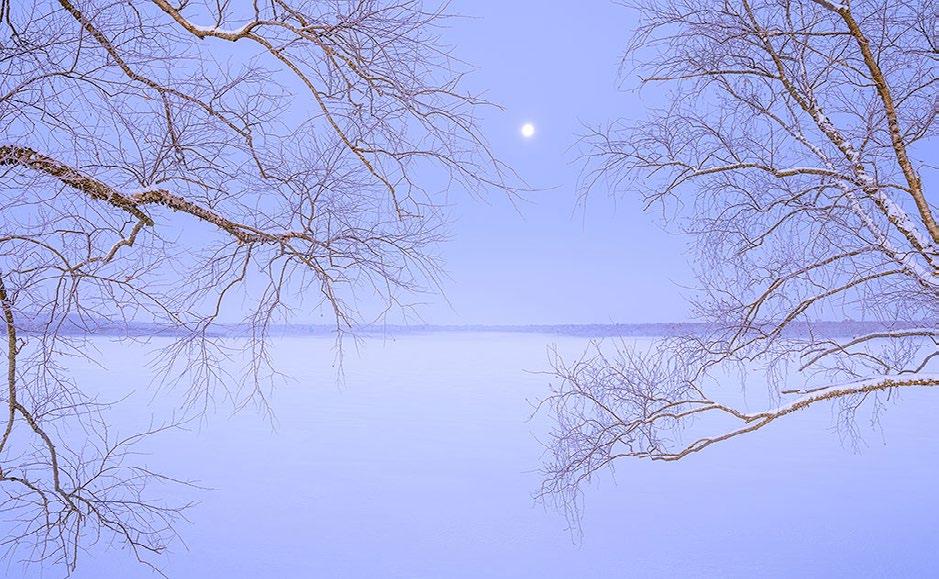
The Climate Working Group found that these changes — warmer, wetter, with more extreme events — will continue. As the climate continues to warm and impacts worsen, groups that cannot afford to move or adapt will be most at risk.
But there is hope. The WICCI Climate Working Group recommends investments in greenhouse gas emission reductions. There is hope for the future but it’s up to us.
This article is part of a series highlighting the contribution from each WICCI Working Group for the 2021 WICCI Assessment Report. Next month: Fisheries
Climate Working Group
Climate Change in Wisconsin
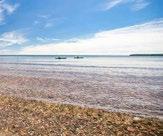
Climate Change in Wisconsin since the 2011 Report
Youth Perspectives on Climate Change
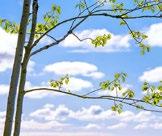

April 2023 9 Feature
Full moon over Lake Wingra. Photo by Kevin Sink
Electrifying Outagamie County




EAP certificate students build report for updating electric vehicle infrastructure.
 By Anica Graney
By Anica Graney
Buckle up and hit the gas ... or should it be electricity? With the anticipated transition to electric vehicles, our terminology for cars won’t be the only thing needing change as counties across Wisconsin must adapt for electric vehicle infrastructure. Outagamie County in northeast Wisconsin is no exception and has partnered with the Energy Analysis and Policy (EAP) graduate certificate at UW–Madison to create a report that will guide county officials as they aim to support electric vehicles.
Scott Williams, EAP certificate coordinator and an EAP alumnus himself, was introduced to the Outagamie County electric vehicle project through UniverCity Year, a university program that connects Wisconsin communities and campus resources to solve local challenges.
As part of their capstone course requirement, EAP certificate students form groups to create a semester-long project for an outside client. This year, the EAP certificate has 14 students enrolled with four capstone projects in the works. No two projects are the same, as Williams strives to offer a mix of government, nonprofit, and private sector clients.
“Once we have the project scope developed, we then present that to the students at the beginning of the semester,” Williams said. “Then, students choose their top projects, and we try to form interdisciplinary teams to get a good mix of different backgrounds and disciplines working on the project.”
The EAP certificate blends disciplines as students learn about energy systems and the policies that shape them. Students from policy, environmental, engineering, economics, and many other graduate
programs across campus join together to tackle real-world problems. “That’s what the value of the EAP certificate is: bringing together students from different disciplines on campus,” Williams said. “We’re expanding what’s possible for the client, while also allowing the students to learn from each other and share their expertise.”
The electric vehicle project — Assessing County Policy and Regulatory Framework to Support Electric Vehicles and Resiliency in Outagamie County — will guide Outagamie County as they prepare for electric vehicles. This includes analyzing electric grid effects, expected growth of electric vehicles in their county, permitting and zoning principles, locations for public electric vehicle charging stations, and funding opportunities, all while ensuring equitable access amongst different communities.
Three graduate students from different programs have worked since the start of the semester to address the aforementioned problems: Christina Zordani, studying Yasmine Abdennadher

10 April 2023 Feature
public affairs; Yasmine Abdennadher, pursuing electrical engineering; and Zach Thomas with a focus on an environment and resources degree.
They were each drawn to electric vehicles for different reasons. Zordani has experience working with electric vehicle policy and hopes to focus her career on it once she graduates in May. Abdennadher has never worked with electric vehicles before but is excited to use her expertise in power systems to learn something new. And Thomas wanted to work on a project that had a focus on technology and policy implementation.
The three meet for at least one hour a week to make sure they’re all on the same page and update each other on their individual tasks, as well as any problems they may have. From reading up on bipartisan infrastructure law to analyzing spatial mapping of Outagamie County, each graduate student has added new experiences to their skillset through this project.
One of the biggest challenges the group has faced is just taking the first step. “It’s literally taking the

project from zero to one,” Abdennadher said. “We can go in any direction we want, but we want to make sure it’s useful for them.”
Ultimately, the group hopes their capstone project makes a difference in not only Outagamie County, but other Wisconsin counties looking to expand electric vehicle infrastructure. “Being able to use this report and apply it to other cities, towns, and counties in Wisconsin would be a big step for electric vehicles,” Zordani said.

While the students’ busy schedules haven’t left time to visit Outagamie County in person yet, they hope their work will leave an impact as it is adapted into the county’s 2024 energy plan. “I keep advocating for a field trip,” Thomas said. “Maybe after graduation.”
In any case, they’ll have to buckle up and “generate some electricity” on their drive up.
Learn more about the Energy Analysis and Policy graduate certificate and the other UniverCity Year Outagamie County projects.

April 2023 11 Feature
Zach Thomas Christina Zordani
Meet Tomiko Jones
The Center for Culture, History, and Environment associate explores changing landscapes through the art of photography.
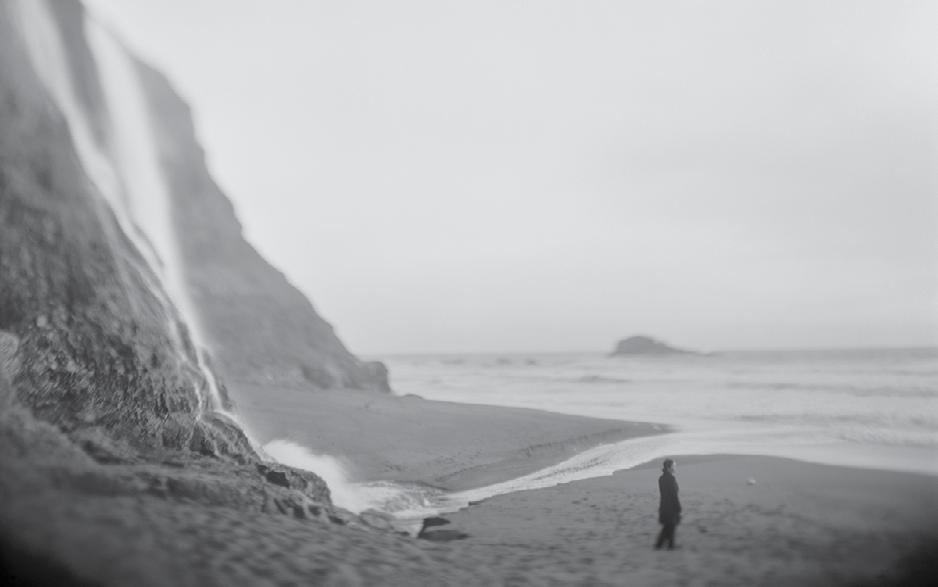 By Rachel Carrier
By Rachel Carrier
Capturing the beautiful, dynamic, and sometimes sorrowful moments nature has to offer is no easy feat and takes a careful eye. The woman behind the lens, Tomiko Jones, is an assistant professor of photography who explores the geography of changing landscapes. “I’ve been a strong visual observer since I was a kid, getting my first camera when I was nine years old... (In college,) I initially started documenting the devastation of the old-growth forest in the Pacific Northwest, which
was extremely heartbreaking as a person who loved to walk amongst the giant trees. I would be out with my film camera photographing the clear cuts and destruction. Witnessing that destruction led me in my early days to environmental activism.”
Although she spent many years in a freelance business in her home region of the Pacific Northwest, Hawai’i and Japan, Jones eventually made her way to Madison for a teaching position, hoping to further share her love for photography with others. “I lived in Seattle for 15 years and contributed to the community through volunteer work while pursuing my photography career. I always enjoyed sharing knowledge and empowering people to use the camera and find their vision ... That’s how education became important to me, it was fulfilling to share what I know and love with people who wanted to learn. Knowing that there’s the possibility to influence future generations by supporting them felt more important than any client job I could take on.”
An impactful moment from her teaching career
“During Covid, right in the beginning of March 2020,





12 April 2023 FACULTY | STAFF IMPACT
“Fall” from the series “Hatsubon.” Medium: pigment print on silk, 65”x52.” Photos by Tomiko Jones (2)
things moved so quickly. We were in the darkroom one day, then isolated the next. I created at-home assignments that allowed me to connect with my students. I sent them on photographic missions, even if it was just to explore the next room over or to step outside for a walking exercise with their camera. I encouraged students to engage with the spaces they were in. Since it was spring, I created assignments working on site, such as making cyanotypes (sun prints). We also just spent time talking with one another and creating a community despite being online. I was moved by how resilient and supportive of one another the students were.”
Her take on capturing the changes of nature through a lens
“Much of my work is place-based and responds to being in a given environment, places I have a deep connection with. My work illuminates the beauty of sites where there has been change: environmental, cultural, historical, political. Spending time in these places bring me joy, but it can also be heartbreaking when you see the big picture of climate change, species extinction, resource extraction, or disregard by other humans . The Instagram effect of popularizing places and increased motorized tourism has had an immeasurable impact on public lands and “wild” places. Many people turn to nature seeking healing and solace, so I ask, “What do we return to nature in response?”
were 23 public monuments and parks on that initial list under review and I had spent time in almost all of them. So many of them were close to my heart, which prompted me to think about how I can investigate the situation. I wanted to use photography to illuminate these places, connect to the people on the land and consider the challenges of these sites without creating a loss narrative, and find strength in individual stories told upon vast landscapes. The research support at UW-Madison has greatly helped me move this project forward, from building a mobile research studio (MRS), input from experts in other disciplines, individualized feedback on works in progress, to attending workshops.
About her favorite photographing styles
“In the past, I often used myself in my work. Sometimes I stand in as an element of humanity, at others as an embodiment of place, in a loose form of communication between person and place. I photograph in, on and near water, responding to the atmospheric light conditions to create meaning. In my most recent work, it sometimes feels absent to not have a person in the photo, but perhaps that absence is a good thing.”

Read an extended version of this story online.
About her project
“These Grand Places”
“I started this project in San Francisco during a year-long residency looking at drought and sea-level rise, twin crises of too much and too little. During that time, a new president was elected, and the Department of the Interior sought to review public land for reduction, privatization, and further permitting of resource use. There
April 2023 13 FACULTY | STAFF IMPACT
“Sometimes it feels absent to not have someone in the photo, but that absence can be a good thing.”
— Tomiko Jones
“Rattlesnake Lake.” Medium: platinotype form scanned 4x5 film negative, 20”x16.”
Seeds of Strategy
By Will Cushman, University Communications
In the race to restore some of North America’s most biodiverse and threatened ecosystems, a straightforward first step is likely among the most important.
New research shows that degraded savanna ecosystems can reap lasting benefits from a single seeding of native understory plants. Published in February in the journal PNAS, the study underscores the longterm value of even a brief burst of targeted land management in efforts to restore fallow agricultural fields and other landscapes scarred by decades or centuries of human activity.
The eight-year experiment, led by a team of scientists at the University of Wisconsin–Madison and Michigan State University, centered on three large tracts of federal land within the historical range of the longleaf pine savanna ecosystem. Longleaf pine savanna dominated portions of the southeastern United States prior to the arrival of Europeans.
This biodiversity hotspot once spanned some 90 million acres but has largely vanished. Less than 5 percent of the continent’s longleaf pine savanna remains, and much of what does persist is a shadow of the unspoiled ecosystem of the past.
“In a high-quality longleaf stand, you can find over 30 species in a square meter. It’s incredible,” says John Orrock, a professor of ecology at UW–Madison. Orrock and fellow integrative biology Professor Ellen Damschen, an ecologist and conservation biologist, led the study with Lars Brudvig at Michigan State. Both Orrock and Damschen are affiliates in the Nelson Institute’s Center for Ecology and the Environment.
The longleaf stands where the researchers set up their experiment started out with decidedly fewer plant species than an unspoiled tract would contain.
But, after assessing more than 230 sites, the team
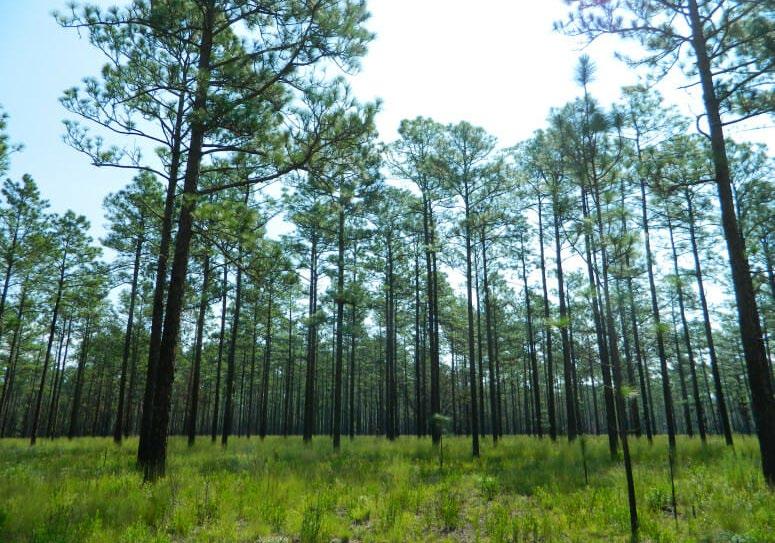
14 April 2023 FACULTY | STAFF IMPACT
Longleaf pine ecosystems like the one pictured near Fayetteville, North Carolina, once stretched from Virginia to Texas and can contain some of the most diverse plant communities in North America. However, much of the remaining longleaf pine plant communities have lost significant biodiversity, making restoration a high priority. Seeding native plants may help restore large portions of this iconic ecosystem across the across the southeast. Photo by Phil Hahn
Seeding pine understories with native savanna species could restore one of North America’s most biodiverse ecosystems.
selected 48 that met specific parameters. These criteria allowed them to gauge whether factors like the depth of fallen pine needles or the spacing between trees would measurably affect whether native understory plants could establish or persist after seeding.

Once the researchers identified their desired mix of sites, they applied herbicide to portions of some before planting them all with seeds from about two dozen species of native non-woody plants that they collected locally, including tall ironweed and sweet goldenrod. Over the course of eight years, the team returned periodically to document how successful each species was in becoming established and, crucially, how well they persisted year after year.
They found that factors like needle depth, tree spacing and seasonal temperature and precipitation did have some influence on the initial success of seeding, including germination and establishment of healthy seedlings.
Specifically, cooler and wetter conditions promoted better establishment, as did shallower needle depth and greater spacing between trees. These latter conditions reflect the ecosystem’s natural state of periodic low-intensity wildfires that burn up leaf litter and saplings. The team found that preemptive herbicide applications did not measurably affect establishment.
Once a diverse understory of savanna plants became established, its long-term persistence was relatively unaffected by environmental factors — with one exception. Higher temperatures during the height of the growing season were
associated with poorer long-term survival among some species, indicating one threat posed by a warming climate.
In addition to highlighting risks of a warming climate, the results of the long-term study demonstrate that a single addition of native seeds can have clear benefits that last for years and years. The researchers are optimistic their results can help land managers
direct limited resources toward restoration strategies with the greatest chance of success, especially because their study helps identify the best place and time to add seeds.
“We can custom tailor the information from these experiments to conservation or restoration practitioners,” says Orrock. “Depending on what your site is like, we can actually give you better information to increase the likelihood that you’re going to succeed in your endeavor of restoring these plant species.”
While the results are most applicable in the context of the longleaf pine savanna ecosystem, they could prove useful for management of similar ecosystems, such as the oak savanna that once dominated large swaths of Wisconsin and the Midwest.
“I see a lot of parallels in the work that we do both here in Wisconsin in tallgrass prairie and oak savanna and longleaf pine savanna in the southeast,” says Damschen. “In fact, many of the species are identical, and the major plant families are extremely similar.”
Here, some of the native understory species that established following seeding fill in the pine understory at an experimental site at Fort Stewart in Georgia. Species pictured include Eupatorium rotundafolim (white flowers) and Veronia angustifolia (purple flowers). Photo by Joseph Veldman
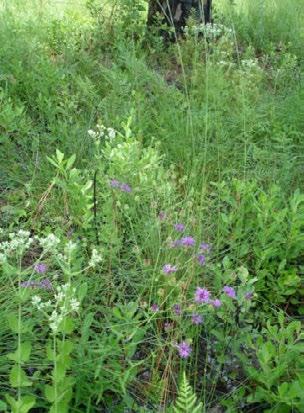
Looking forward, Orrock and Damschen say they would like to better understand the traits of species and even individual plants that might help them germinate and establish healthy seedlings. This type of knowledge could prove especially useful for land managers dealing with new and rapidly unfolding environmental conditions associated with a changing climate.
This story was originally published by University Communications.
April 2023 15
FACULTY | STAFF IMPACT
An experimental plot at Fort Bragg in North Carolina shows how devoid of plant life a highly degraded longleaf pine understory can be. This photo was taken at the beginning of the experiment before the seed additions had time to establish. Photo by Brett Mattingly
From the Office of Sustainability
A monthly update from faculty, staff, and students in the Office of Sustainability – Education and Research. This month’s column is from Tim Lindstrom, student intern program manager.
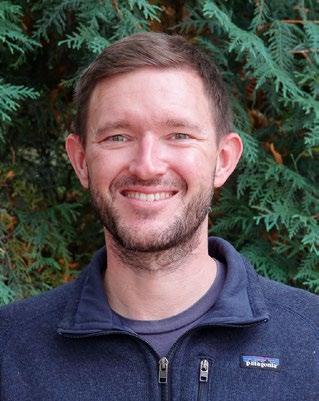
What does it mean to “honor and engage students” in service of sustainability at UW–Madison? This was among the charges given to UW–Madison more than 10 years ago by the Sustainability Initiative Task Force, whose work also catalyzed the creation of the Office of Sustainability. As we celebrate our first decade, we also celebrate one of our central programs: the campus sustainability intern program. Fielding its first cohort of undergraduate interns in the 2013–14 academic year, the program was created in part to answer the charge of honoring and engaging students. After all, not only are students the engine of change on our campus, they also represent the “future generations” that sustainability safeguards.
The intern program’s two fundamental beliefs — that student voices are critical to shaping sustainability initiatives at UW–Madison, and that campus must practice what we preach in the realm of sustainability — led to a unique structural approach to the program. Unlike most undergraduate internships, where students develop their knowledge with external host organizations, our internship takes an outside-in approach. With our office as the host, interns spend the summer developing foundational knowledge of sustainability and campus life-support systems via first-hand interaction with external organizations like the Dane County Landfill, Madison Gas & Electric, and more. Interns then apply this knowledge during the school year toward sustainability initiatives on campus. We embrace “campus as a living learning laboratory,” where solutions to problems are conceived, developed, implemented, and evaluated.
The impacts, both at UW–Madison and in the lives of our interns, are profound. Interns have created certification programs and consulted with campus offices, laboratories, and event planners. They have developed sustainability initiatives with the athletics and the Greek community, and created the SustainUW Podcast and Amplifying BIPOC Voices in Sustainability series. With Office of Sustainability staff, interns have assessed campus sustainability metrics and implemented zero-waste and clean-energy projects. Interns have presented their work at UW System gatherings, national sustainability conferences, and in academic journals. Emblematic of the Wisconsin Idea, intern alumni now pay it forward through careers in sustainability across sectors.
Sustainability is a mission for which the work is never complete. In the 10 years since the program’s inception, more than 150 undergraduates have served as Office of Sustainability interns, logging tens of thousands of hours in service to our campus community. Our mission to honor and engage students continues to grow with the additions of a new corporate sustainability internship and STEM sustainability scholarship for first-generation college students. I am privileged and honored to play a small role in this work, and I look forward to seeing what the next decade of sustainability interns will accomplish at our university — and beyond.
16 April 2023
FACULTY | STAFF IMPACT
The past few months have been very exciting for our center. The start of 2023 brought the incredible news of the $9.3M USDA award to UW–Madison to establish the Rural Partnerships Institute. This collaborative effort among CCR, the College of Agricultural and Life Sciences, and the Division of Extension will support Wisconsin’s rural communities by revitalizing and expanding Wisconsin State Climatology Office (with Steve Vavrus as interim state climatologist); establishing the Wisconsin Mesonet; and developing of community outreach programs.
CCR added three new core members: Andrea Dutton from the Department of Geoscience, Jon Martin from the Department of Atmospheric and Oceanic Sciences (AOS), and Simon Goring from the Department of Geography. Andrea is an expert in paleoclimatology, paleoceanography, isotope geochemistry, carbon sedimentology, and sea-level change. Jon is an expert in synoptic meteorology and large-scale atmospheric dynamics, focusing on wintertime cyclones and jet streams. Simon is an expert in the relationship between biotic systems and large-scale climatic change on time scales of centuries to millennia.
The latest Reid Bryson Scholarship Poster Competition on February 13 brought a record 46 student appli-
Director’s Cut
A quarterly update from Michael Notaro, director of the Center

for Climatic Research

cants from a diverse set of departments and institutes. Thanks to the generosity of scholarship donors, CCR distributed seven awards to extremely deserving UW students. Read about the winners on page 19.
Looking ahead, CCR is awaiting a busy spring and summer. On March 21, CCR and the Center for Sustainability and the Global Environment cohosted a lightning talk event, to foster across-center collaboration. CCR is hosting the Midwest Global Learning and Observations to Benefit the Environment (GLOBE) Student Research Symposium on April 21–23, attracting middle and high school students from Midwestern states to our campus. Activities will include poster sessions for students to present their citizen-science research, a tour of Cave of the Mounds, a boat ride on Lake Mendota and tour of the Limnology Department, and a tour of the Atmospheric, Oceanic, and Space Sciences Building. Professor Hannah Zanowski will lead the AOS Summer Research Program from May 31 to August 4, in which undergraduates from across the country will conduct research related to atmospheric dynamics and radiation, clouds and precipitation, global and regional climate, oceanography, or satellite remote sensing and air quality under the guidance of faculty, scientists, and graduate students from AOS, CCR, and the Space Science and Engi-
neering Center. In addition to the second year of The Sky’s the Limit STEM Camp at the Welty Environmental Center during June and July, CCR will expand to a second camp, Nature’s Navigators, for autistic middle and high school students, to be held at Upham Woods, in partnership with the Division of Extension.
CCR participated in a five-year strategic planning exercise and established the following goals:
(1) expand and diversify our grant portfolio, targeting new federal funding calls and foundations/corporations, and aim to improve its proposal success rate; (2) expand our community of postdoctoral researchers, undergraduate students, and graduate students for greater training opportunities; (3) develop a collaborative network of on- and off-campus social scientists as new affiliates or core members; (4) enhance our on- and off-campus visibility as a world leader in climate change research and applications; and (5) foster an inviting and inclusive work environment and host more academic and social gatherings in partnership with other departments. These are ambitious goals, but I have full confidence that CCR can achieve them.
Michael Notaro Director, Center for Climatic Research
April 2023 17 FRONT AND CENTER
The Reward of Research Undergraduate student
Sean Bertalot places second in the Center for Climatic Research’s Reid Bryson Scholarship poster session.
By Anica Graney
As a recent runner-up for the Center for Climatic Research’s Reid Bryson Scholarship poster session, undergraduate senior Sean Bertalot never expected such a distinction just a few short years ago.
Originally from Madison, Bertalot decided to stick to his roots and attend UW–Madison where he began as a pre-business student. After taking a general course load his freshman year, he soon found himself being drawn toward environmental sciences and officially majored in it his sophomore year, adding on the environmental studies certificate as well.
This change of plans wasn’t something Bertalot anticipated. He never did poorly in any of his high school science classes, but never excelled in any, either. Ultimately, Bertalot never thought he would be able to make a career within environmental science.
“Then, through a lot of the courses I took here, I started to get the understanding that this is actually something I can do as a career,” Bertalot said. “And once that realization started, I was set on pursuing an environmental studies/sciences path.”
Bertalot appreciates how complementary the environmental sciences major is with the environmental studies certificate, citing how there is a nice mix of hard science with interdisciplinary focuses. “I found that picking up environmental studies and taking more courses within the Nelson Institute gave me a little more flexibility to explore different angles of environmental issues,” Bertalot said. “It’s added another dimension to what I was already studying.”
For Bertalot, two classes within his environmental
studies certificate stood out to him in terms of offering different perspectives to his hard science classes: Environment in the Global Economy with Associate Professor Dominic Parker, and Environmental Policy and Regulation with instructor Morgan Robinson. “Those classes were amazing,” Bertalot said.
Bertalot also took Conservation of Aquatic Resources, which has turned into the focal point of his studies. He currently works as an undergraduate researcher at the Stanley Lab within the UW–Madison Center for Limnology, where he researches the remote sensing of algae blooms and spatial patterns on lakes.
With encouragement from his mentor, PhD student David Ortiz, along with head of the Stanley Lab and Center for Limnology professor, Emily Stanley, Bertalot conducted his own independent research when not working on job tasks; research that propelled him into entering the Reid Bryson Scholarship poster session.

18 April 2023 FRONT AND CENTER
Through the Nelson Institute Center for Climatic Research, the 11th annual Reid Bryson Scholarship
Photo by Owen Mosley
poster session was held February 13, 2023, as part of the Atmospheric, Oceanic, and Space Sciences Building Poster Reception. The event offers two undergraduate and five graduate scholarship awards with the hopes of capturing the interdisciplinary nature of Professor Reid Bryson’s studies and inspiring other UW–Madison students.
Bertalot’s poster — Cyanobacteria Blooms: Coupling Satellite Remote Sensing and High-Resolution Spatial Data — was a visual culmination of what he’s been researching. “It was an exceptional opportunity in all regards, but also just great to see what I’ve been working on for the past eight months, manifested into an actual product,” Bertalot said.
As runner-up for the undergraduate award, Bertalot said it was “an honor to be recognized for something I’ve been working on mostly by myself, but also with some really amazing support from a couple key mentors.”
As Bertalot finishes his final semester in May, he’ll go on to the University of Wyoming to earn a master’s degree in zoology. There, he’ll be joining the Collins Lab, also known as the Aquatic Ecosystem Ecology Lab, headed by Assistant Professor Sarah Collins, who worked with Stanley years ago as a post-doctoral fellow. “It’ll be very similar stuff to what I’ve been doing at the Center for Limnology, but just in a different landscape,” Bertalot said. He’ll be contributing to the WY-ACT project which aims to better understand how climate change impacts Wyoming’s aquatic systems.
As he prepares to move out West, Bertalot reflects on his experiences at the Nelson Institute and Center for Limnology. “Not only was it a welcoming community, but I’ve never once felt talked down to, and I’ve always had my questions met with kind regard and thoughtfulness,” Bertalot said. “It sounds corny, but I’ve just not had a bad experience.”

This year’s Reid Bryson poster session saw a record 46 student applicants from a diverse set of departments and institutes across campus. Congratulations to all the winners!
2023 Reid Bryson Undergraduate Scholarships
Winner: Connor Steinke, “Volume Transport Changes through West Greenland Arctic Gateways in CMIP6 Models”
Runner-Up: Sean Bertalot, “Cyanobacteria Blooms: Coupling Satellite Remote Sensing and High-resolution Spatial Data”
2023 Reid Bryson Graduate Scholarships
Outside of his classes and research, Bertalot also works with Water Action Volunteers (WAV), a citizen science stream monitoring program within the UW–Madison Division of Extension. There, he assembles monitoring kits for Wisconsin streams that are sent to volunteers across the state who measure water flow, turbidity, and oxygen, among other things. Data is collected throughout the year and then returned to WAV, where Bertalot helps coordinate with the Wisconsin Department of Natural Resources to enter the information into a database.
“It feels a lot more personal than just a job,” Bertalot said. “It’s been a really cool organization to be a part of and having first-hand experience with a big community science initiative has been awesome.”
Winner: Harrison Tran, “Reconstructing Oceanic Precipitation Trends using Ship-based Observations”
Runners-Up: Ian Cornejo, “Mei-Yu Frontal Convergence and Heavy Rainfall in Taiwan’s Complex Terrain”
Aaron Alexander, Resolving Fine-Scale Lateral Water Transfers in Urban Environments alters Regional Climate Simulations”
Yichen Tao, “Spatiotemporal Characteristics of Heavy Precipitation Systems in the Upper Midwestern United States”
Rebecca Alcock, “Novel Renewable Energy Networks for Clinic and Community Resilience”
Thanks to the generosity of our supporters, we will be awarding more Reid Bryson Scholarships in 2024 to worthy University of Wisconsin–Madison students!
April 2023 19 August 2021 FRONT AND CENTER
Bertalot pilots the Center for Limnology’s boat “Humpback” during a sampling day last summer.
Photo by Ally Kundinger
Pursuing Goals and Upholding Values to Inspire Others
Sustainability certificate student Michelle Yang featured in the Wisconsin School of Business’s “Next Generation of Business Leaders.”
By the Wisconsin School of Business
Ask Michelle Yang what trait she’s most proud of and she’ll tell you it’s her perseverance. Growing up the daughter of two Laotian immigrants, Yang saw firsthand the contrast between her Hmong culture and the majority culture in America. It helped Yang figure out her own identity and, thanks to the encouragement of her parents, forge a pioneering path for her generation and those that follow.
“Women in the Hmong culture don’t often attain a higher education, at least in my mom’s generation,” Yang says. “I’m proud of being able to stand as who I am and show that you’re capable of doing anything, no matter where you come from. I definitely want to be a role model for my community back home, especially to younger girls.”
Yang’s perseverance was tested when she was diagnosed with scoliosis at age 11. An active kid and avid golfer, she could have let her doctor’s insistence that she shouldn’t play sports keep her from following her passions. But that’s not Yang’s way.
“I didn’t really listen to the doctor,” Yang admits. “But I was able to prove him wrong and still pursue something that I loved. I think that trait that I had as an 11-year-old is still very prevalent today.”
At the Wisconsin School of Business, Yang is as engaged and tenacious as ever. A double major in marketing and finance, she is flexing both her creative and analytical sides. She’s passionate about the ethical use of technology—an interest sparked by watching The Social Dilemma documentary—and

20 April 2023 STUDENT SNAPSHOT
“I’m proud of being able to stand as who I am and show that you’re capable of doing anything, no matter where you come from.”
— Michelle Yang
is involved in the student organization Women in Business Technology. She’s also invested in sustainable business practices and using her career to make a positive social impact.

“It’s really important as a leader to hold yourself accountable to your values and to foster a community with those you’re leading. When people have a shared purpose, even if just one person starts with what they believe in, it can be revolutionary within any business.”
Who inspires you?
Both my parents, but especially my dad. He lost his family in war and spent 10 years in a refugee camp before coming to America. The way he carries himself really inspires me. He is such a positive person in my life. He has taught me to be selfless and driven.
What are you listening to?
I make a new playlist every month!
What is the best advice you have received?
“Making a social impact, regardless of what I choose to do within my career path, is the most important thing to me. I really want to make sure that I am giving back and that I’m part of a company that is working towards things that I personally value. I’m looking for a company that will push me to grow.”
As someone who is deeply committed to bettering herself, Yang has a strong sense of who she is.

“I’m really invested in self-growth,” Yang says. “I love journaling and reflecting on my day. It allows me to give myself grace and understand my values.”
It’s those values—paired with her trademark perseverance—that also give Yang a strong sense of how she wants to lead. Michelle
Trust in my own capabilities.
April 2023 21 STUDENT SNAPSHOT
Michelle credits her parents as her biggest supporters and inspiration.
(fourth from left) grew up in a close-knit Hmong community in Minnesota.
This story was originally featured in the Wisconsin School of Business’s Trusted to Lead campaign.
You could say undergraduate student Tien Vo is very grounded. Not just from her calm and thoughtful personality, but also from her majors in geography and environmental studies.
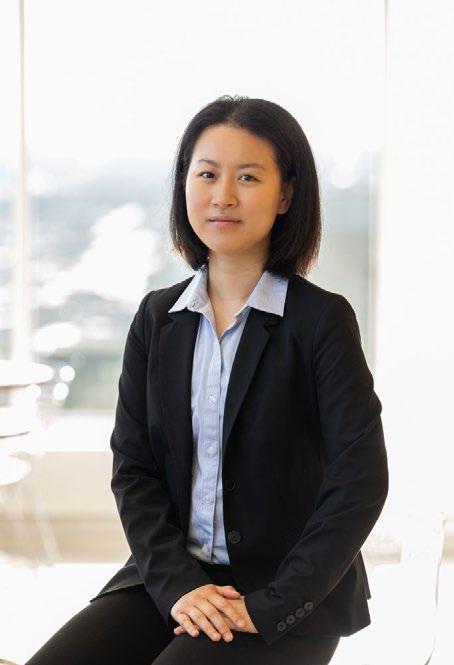
A senior, Vo has spent her undergraduate career participating in many environmentally focused activities and programs, staying rooted to what she is most passionate about: soil science. Vo has conducted soil research and geomorphology in the Central Great Plains and sand dunes with the Undergraduate Research Scholars Program; gotten her hands dirty volunteering at Troy Farm, an urban farm in Madison; and has applied to a couple of soil science graduate programs around the country.
Vo finds what lies under our feet fascinating, but her interests expand even more into community activism. For the past two years, Vo has been a Community Environmental Scholar where she leads presentations on environmental issues, community environmentalism, and books about sustainability.
Rooted in the Ground Undergraduate
student
By Anica Graney
The Community Environmental Scholars Program (CESP) is an opportunity designed for students who want to link their passion for the environment with their commitment to community. The program partners undergraduate students with community-based environmental organizations where they can obtain hands-on practice while fostering some good in the world.
meet these people in my majors.”
During her second semester with CESP, Vo partnered with a school and wrote environmental lesson plans that she would teach to children over Zoom. While she hadn’t ever considered working with young students before, Vo said the experience went well. “I thought the students would be unfocused or not as interested in the lesson plans,” Vo said. “But they were actually really interested and engaged.”
As a Community Environmental Scholar, Vo enjoys meeting new people from all areas of the university. “With CESP, there’s a focus on the
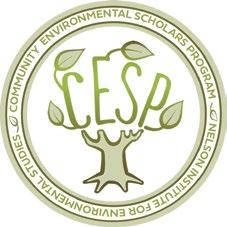
22 April 2023 STUDENT SNAPSHOT
Tien Vo’s passion for soil science extends beyond the classroom.
“CESP accepts all majors which has been really fun and enlightening because I wouldn’t normally
— Tien Vo
environment, but it accepts all majors, so I’ve met people majoring in psychology and engineering which has been really fun and enlightening because I wouldn’t normally meet these people in my majors.” Vo said.
Vo encourages other Community Environmental Scholars to put into the program what they want to get out of it, interact with other CESP students to learn about what they’re interested in, and to talk to CESP program director Rob Beattie. “He’s really passionate about the environment and very well connected, so definitely talk to him to learn more about career options or areas of study,” Vo said.
things I learned in that class into my future graduate studies of the environment, agricultural systems, and soil.”
For the final capstone project, students built community awareness and engagement of local food system issues by working with farm-to-table restaurant Brix Cider in the nearby town of Mount Horeb. Reynolds noted that Vo was a “very thoughtful and articulate student” in the class and investigated the social politics of cider for her capstone project. “It was a really well-researched and beautiful project that pushed our understanding of cider in new ways!” Reynolds said.
The environmental studies major requires students to pair with another area of study, offering an individualized, interdisciplinary learning experience. For Vo, her pairing of environmental studies and geography worked well together. “It was nice to learn through both majors how we impact the environment, how we interact with our environment, and the relationship between humans and nature,” Vo said.
Learn more about the environmental studies major and how you can support the program
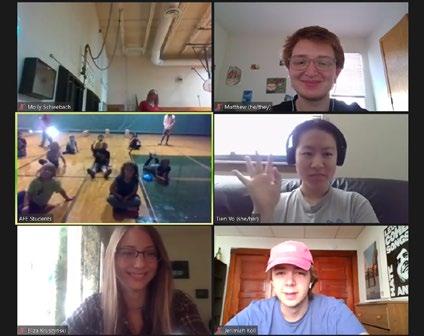

In the classroom, Vo’s interests expand even further into agricultural studies as she took Environmental Studies 600: Food Systems Resilience in Wisconsin as her environmental studies capstone class. Environmental Studies 600 offers multiple rotating sections each semester that focus on a variety of interdisciplinary learning through completion of a final capstone project. This section, taught by instructor Jules Reynolds, examined the challenges and opportunities of food systems through a resilience and justice lens.
“I had never really taken a formal food systems class, so it was really eye opening,” Vo said. “It added a dimension of study that I want to add to my further education. I’m hoping to incorporate
April 2023 23 STUDENT SNAPSHOT
Vo and other CESP students meet with elementary school kids to deliver environmental lessons. Photo by Tien Vo
Vo (right) stands with other Badger volunteers at Troy Farm. Photo by Lara Miller
Recent graduate of the environmental observation and informatics (EOI) MS program David Kolodziejski found his niche in geographic information systems (GIS) and remote sensing after a long period of career exploration. His message to those unsure about what they want to pursue in their academics or career? Environmental observations and informatics is for everyone, and anyone can do it.
Kolodziejski’s high school and undergraduate career was a time of uncertainty. Not knowing what he wanted to study, Kolodziejski enrolled at the University of Wisconsin–Whitewater and changed his major five times before finding his passion. When he stumbled upon Environmental Challenges as an elective course, the wheels started to turn.
“I was introduced to GIS and remote sensing, and it was the first time I ever thought to myself, ‘Wow, this is really amazing and cool work, and I feel like I can make a big impact in this field.’ ” Since he was a kid, Kolodzie -
Remote Sensing to Inspire Action
EOI alumnus David Kolodziejski provides climate solutions using remote sensing and GIS.
 By Rachel Carrier
By Rachel Carrier
jski has loved the environment and the outdoors. Despite his love for video games, he always made a point to get outside for a hike or other outdoor activities. Growing up in a time of climate activism also helped expose him to the field.
“I always thought the answers were so simple. I quickly learned that climate change and environmental issues are a very gray area.”
— David Kolodziejski
“When I was in high school, there was a huge push to act on climate change and learn about how our actions have both direct and indirect consequences on the environment through economics, health, and public safety,” he said.
“During that time, I always thought the answers were so simple,” Kolodziejski recalled. “I was beside myself when I start-
ed learning about how difficult it was to talk about and find solutions for these issues. Rather than it being black and white, I quickly learned that climate change and environmental issues are a very gray area.”
As Kolodziejski progressed in his Environmental Challenges class, he realized that he could use GIS and remote sensing as a tool to persuade others that they need to act on climate issues. He saw an opportunity to create models that show an objective problem to bring people together to fix problems.
After graduating with his bachelor’s degree in mathematics, geography, and GIS from UW–Whitewater, Kolodziejski entered the workforce as a geospatial technician at Continental Mapping Consultants (CMC) (now Axim Geospatial). After nearly two years with CMC, he progressed into a role with the Wisconsin Department of Natural Resources (WDNR).
At the WDNR, Kolodziejski
24 April 2023 ALUMNI SPOTLIGHT
worked as a geographic information systems specialist to provide spatial analysis expertise and technical support for forestry, fire ecology, and LANDFIRE research projects, a national program that identifies wildfire behavior and fuel sources across the continental United States.
A year into his position with the WDNR, Kolodziejski was drawn to return to school to further his knowledge of GIS and the environment.


“There were a lot of difficult moments working at the Wisconsin DNR because I lacked that environmental knowledge.” Kolodziejski recalled. “I could do all these amazing things with GIS and geospatial data, but I had a hard time communicating that with environmental managers, forest managers, and ecologists. I realized that I needed to better understand how geospatial data plays into different parts of the environment and ultimately what stakeholders were looking for.”
Soon after, Kolodziejski found himself in the EOI program at the Nelson Institute.
“I learned that the EOI program was a great
April 2023 25 ALUMNI SPOTLIGHT
Kolodziejski playing with his dog Eevee while walking through the Glacier Drumlin Trail in Cottage Grove Wisconsin. Photos by Lindy Oates (2)
Kolodziejski presenting his EOI capstone project on applying machine learning algorithms to assess the temporal change of biomass across the Emerald Edge Rainforest.
fit for early to mid-career analysts wanting to learn more about geospatial data and how to use it to directly address environmental challenges and help create actionable solutions,” Kolodziejski recalled. “To me it was a no brainer to do the program, it was a perfect fit for where I was in my career.”
One class he found to be beneficial to his career goals was an advanced remote sensing course, where students used Python and Google Earth engine to perform remote sensing analysis.
“I learned how to aggregate satellite images and conduct machine learning models on them and put them into a Google Earth engine application to use in various ways,” Kolodziejski said. “It was a great class. We were given a lot of phenomenal examples of how to utilize Google Earth engine, Python, and other applications in a way that was interesting and exciting. I look back at all the work I do now and think, ‘Wow, I could not have done that a year ago.’”
In Kolodziejski’s exit seminar project before completing the program in August of 2022, he worked with the Nature Conservancy to assess the temporal change of biomass across the emerald edge rainforest in the Pacific Northwest. The project used machine learning algorithms to predict biomass over a 20-year period.
“Everything I learned across the board in the EOI program went into those eight weeks working with the Nature Conservancy,” Kolodziejski said. “All of the statistics, machine learning mod -
eling, all the geospatial analysis really came into play.”
Kolodziejski is still working with the Nature Conservancy, providing geospatial support and modeling. His partnership has been extended multiple times on this effort. What was supposed to be an eight-week project has now been extended through October of 2023.
In December of 2022, Kolodziejski started a position at Redcastle Resources supporting the US Forest Service National Health program through the USDA, working with the forest health assessment and applied science team. His work includes managing geospatial data layers that
have an impact on insect and disease mapping implications on how national forests are protected. Kolodziejski works in collaboration with qualitative ecologists and remote sensing experts to aggregate environmental variables that could help advance predictions in other models.
“I feel really good with where I am now five years into my career, and I feel like I wouldn’t be where I am now if it weren’t for the EOI program,” Kolodziejski said.
Learn more about the environmental observation and informatics MS and how you can support the program .
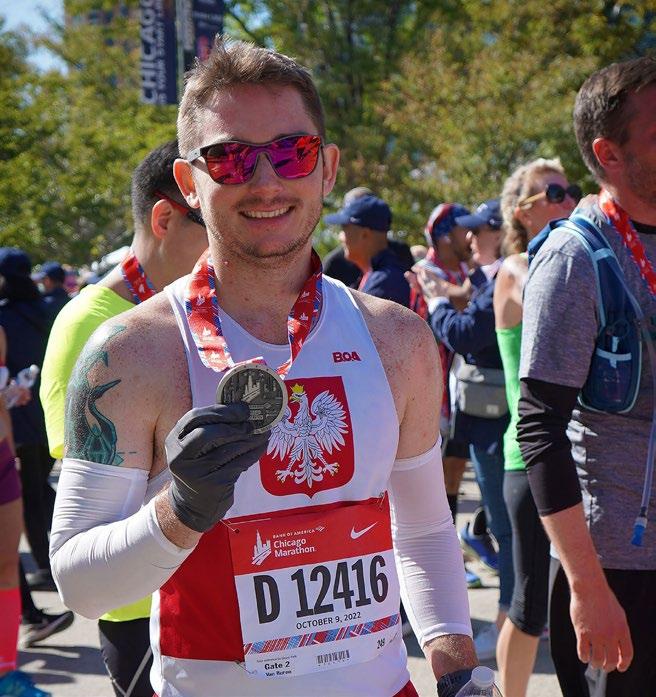
26 April 2023 ALUMNI SPOTLIGHT
Looking Back at Alumni Virtual Networking
On Tuesday, April 4, alumni across the world gathered online for the Nelson Institute’s spring alumni virtual networking event. This spring’s event — hosted by alumni Matt Wallrath and Maggie Radl — included presentations by five alumni who spoke about their career paths since graduating from UW–Madison. Thank you to the presenters who volunteered their time to help strengthen our Nelson alumni network: Colleen Corrigan (CBSD’03), Vanessa Durant (EC’15), Julia Janicki (EOI’19), Omar Ohrens (E&R’18), and Matt Wallrath (EC’18). More than 30 alumni and current Nelson students attended, representing 33 states and two countries. Interested in participating in future alumni networking events? Reach out Emily Reynolds at ereynolds2@wisc.edu. Our next alumni event is the annual Rendezvous at the Terrace on Friday, Sept. 29. Stay tuned for more information coming soon. We hope to see you there!
A Successful Sustainable Success
Reports suggest that switching from fossil fuels to batteries and electrification in the U.S. transportation, industrial, and commercial and residential sectors can reduce greenhouse gas emissions by 70 percent in just a few decades … but everything has its costs. On Thursday, March 23, three national experts came to the UW campus to discuss Batteries and Electrification: Is It Sustainable for the 2023 Sustainable Success Lecture Series.
Batteries: “They are an energizing topic,” said panelist Mathy Vathanaraj Stanislaus, followed by laughs from the crowd. This year’s event, cohosted by UW–Madison’s Nelson Institute for Environmental Studies and the Wisconsin School of Business’ Grainger Center for Supply Chain Management, featured Eric Dresselhuys, a UW–Madison alumnus and CEO of ESS Tech, Inc., a company working to accelerate global decarbonization; Stanislaus, executive director and vice provost of Drexel University’s Environmental Collaboratory institute and board member/advisor of the Global Battery Alliance and Responsible Battery Coalition; and Emily Pickrell, independent energy journalist and scholar
and NGO journalist at the MacArthur Foundation.
More than 100 members of the campus community joined the panel of experts for a moderated discussion and Q & A to discuss how electrification affects everything from climate change to national security. Miss the event? Watch a recording of the discussion.
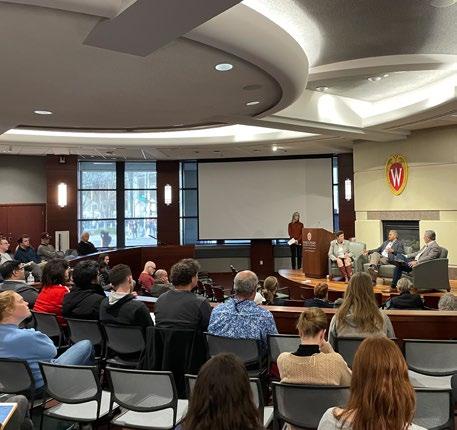
April 2023 27
ALUMNI SPOTLIGHT EVENTS
Panelists Emily Pickrell, Mathy Vathanaraj Stanislaus, and Eric Dresselhuys speak before more than 100 members of the campus community interested in batteries and electrification. Photo by Anica Graney
Nuclear Fallout in Virtual Reality
The Center for Culture, History, and Environment took participants into a virtual world of imminent nuclear fallout.
By Kaitlin Moore
On March 9 and 10, 2023, the Graduate Associate Organizing Committee at the Center for Culture, History, and Environment (CHE) was proud to organize a two-day screening of the virtual reality documentary On the Morning You Wake (To the End of the World) , an event cosponsored by CHE and the Associated Students of Madison and open to both current UW–Madison students and faculty as well as members of the greater Madison community.
On the Morning You Wake (To the End of the World) recounts the events of January 13, 2018, when Hawaii’s Emergency Management Agency sent a statewide warning about an imminent ballistic missile attack, a warning that turned out, ultimately, to be a false alarm.

Developed by creative teams at Atlas V and Archer’s Mark, organized by the nonprofit organiza-
tion Games for Change, and featuring the spoken-word poetry of activist, artist, and professor of Native Hawaiian politics Dr. Jamaica Heolimeleikalani Osorio, On the Morning You Wake immerses the viewer in the experiential resonances of January 13 when over a million Hawaiians were forced to reckon with the existential threat posed by the destructive power of nuclear weapons. Framed by the pathos and power of Dr. Osorio’s poetry and grounded by moving eyewitness accounts detailing the events of January 13, On the Morning You Wake seeks to humanize and make immediate the vast, existential issue of global nuclear security, while updating and making relevant to a contemporary audience a threat many people mistake for a relic from the Cold War era.
“It was so moving,” recalled one attendee. “What an amazing experience. I’ve been talking about it nonstop.”
28 April 2023
EVENTS
Promotional image from the 2022 film, On the Morning You Wake (to the End of the World).
Attuned to CHE’s commitment to engaging in the continual practice of examining and addressing systemic and interpersonal forms of discrimination and injustice within environmental humanities and social science scholarship, On the Morning You Wake challenged participants to bear witness to the singular event of the false alert on January 13 while accounting for the expansive terrain of Hawaiian society’s encounters with colonialism across time and space, including the colonialism that informs modern nuclear ideologies. While the false missile alert lasted only 38 minutes from beginning to end, the virtual reality documentary embedded within this small window took a long-term look at the mechanisms and impacts of generations of subjugation by colonial technologies, philosophies, and experiences, illuminating the connections between historical perspectives of Hawaii as an imperial theater and nuclear weapons policies in the current day.
After the experience, another attendee noted,
“It’s difficult to do justice to the experience in virtual reality. Everything was visceral, immediate, and so impactful.” Following the screening, many participants praised the virtual reality component of the documentary, describing the ways in which VR lay emphasis on the ways dynamically embodied actions had meaning and agency, and the powerful sense of presence that arose from the same. The events of January 13 were affectively encountered, and therefore viscerally experienced, along multiple sensory registers thanks to the immersion allowed by the virtual reality interface.
The two-day screening concluded with a virtual discussion and debrief led by Lovely Umayam, a writer and a nuclear nonproliferation expert. As the founder of the Bombshelltoe Policy and Arts Collective, a creative organization pushing for an active exploration of arts, culture and history to promote nuclear nonproliferation, arms control and disarmament, Lovely talked about the role of art as a panacea for trauma and the capacity of creative work to bring governments, technologists, and civil society together to discuss how to secure nuclear materials around the world.

April 2023 29
EVENTS
Each attendee was given a VR headset to experience the film. Photo courtesy of Kaitlin Moore
“It’s difficult to do justice to the experience. Everything was visceral, immediate, and so impactful.”
CPEP Series
Each semester the Climate, People, and the Environment Program (CPEP) hosts a weekly seminar featuring lectures by visiting speakers as well as presentations by CPEP faculty, scientists, and students. CPEP seminars take place from 4–5 p.m. on Tuesdays at 811 Atmospheric, Oceanic, and Space Sciences Building. The presentations are held in conjunction with the Department of Atmospheric and Oceanic Sciences and are open to the public.

Featured Seminar:
Tuesday, April 25
Gaps in Network Infrastructure Limit Our Understanding of Biogenic Methane Emissions Across the United States Sparkle Malone, assistant professor, Yale School of the Environment
Weston Roundtable Series

The Weston Roundtable Series promotes a robust understanding of sustainability science, engineering, and policy through weekly lectures co-sponsored by the Center for Sustainability and the Global Environment (SAGE), the Department of Civil and Environmental Engineering, and the Office of Sustainability. Lectures are on Thursdays from 4:15–5:15 p.m. at 1163 Mechanical Engineering.
Featured Roundtable: Thursday, April 27
On the Swamp: Stories of Indigenous Environmental Justice from North Carolina’s Coastal Plain Ryan Emanuel, associate professor of environmental sciences and policy, Duke University
Center for Culture, History, and Environment: Environmental Colloquia
The Center for Culture, History, and Environment (CHE) invites you to attend the Spring 2023 CHE Environmental Colloquia series on Wednesdays from 12–1 p.m. in 140 Science Hall.

Featured Colloquium: Wednesday, April 26
Settlement and Development along Wisconsin’s Chicago, Milwaukee, St. Paul, and Pacific Railroad John Canfield, PhD student in the Department of Sociology
30 April 2023 EVENTS
Day (and Night) of the Badger a Success!

Thank you! We are grateful for everyone who participated in UW–Madison’s annual day of giving, Day of the Badger, this year held on March 28–29. Together, we raised a total of $19,699 — including two generous matching gifts from the Nelson Institute Board of Visitors and Caterpillar, Inc. — for the Nelson Institute and spread a great deal of Nelson spirit and pride all around the world as well. We appreciate your generous support of the Nelson Institute and all that you do to ensure our continued success!
This year, we put a special Nelson twist on the event … Night of the Badger! Inspired by an edition of The Badger comic — a favorite of Dean Paul Robbins — that takes place in Science Hall and the steam tunnels below, we hosted a social media giveaway to anyone who engaged with our @NelsonInstitute social accounts between 6 p.m. to 6 a.m. Congratulations to Cindy Hollenberger, Kelsey Jashinsky, and Corey Otis who participated and won original copies of The Badger, autographed by author and UW alumnus Mike Baron!
Total $19,699
112 Donors
9,342

Social Impressions
1,848 Minutes $11,000 Matching Funds
Support
Interested in supporting the Nelson Institute? There are many ways to contribute to the Nelson Institute — participating in our events, mentoring our students, providing connections to your personal networks, and making financial gifts. All of these are necessary and important to us, and we invite you to invest in our community in the way that makes the most sense to you.
Learn more about all of the great academic programs, research centers, and public programs we offer.
Gifts in any amount are needed and appreciated!
April 2023 31
ADVANCEMENT
NELSON
THANK YOU!
Congrats, grads!
This year, hundreds of Nelson Institute students will toss their caps and celebrate their new status as alumni at the UW–Madison spring commencement ceremony, held May 12–13. And celebrate the Nelson soon-to-be grads with us at our pre-commencement celebration on Thursday, May 4.
Register today!



 Paul Robbins Dean, Nelson Institute
Paul Robbins Dean, Nelson Institute


















 By Rachel Carrier
By Rachel Carrier


















 By Rachel Carrier
By Rachel Carrier











